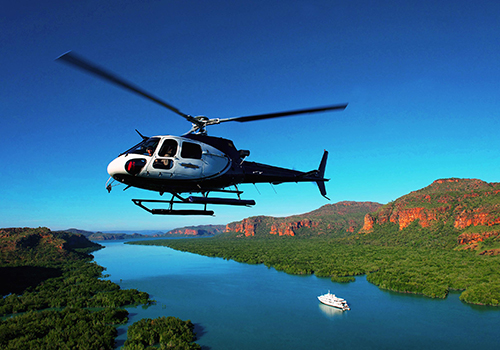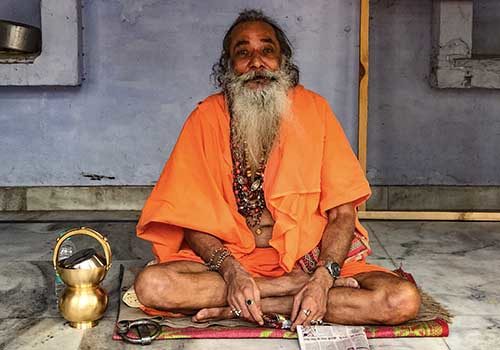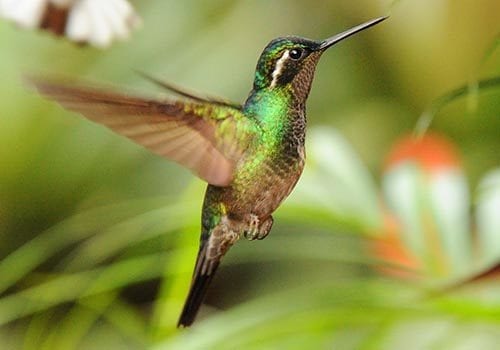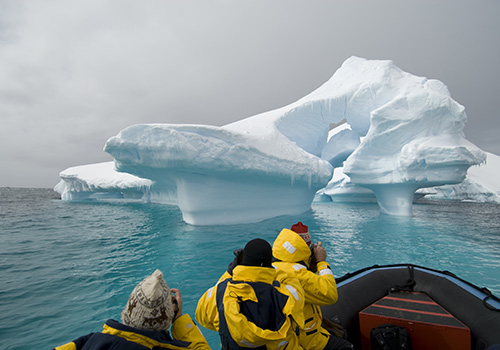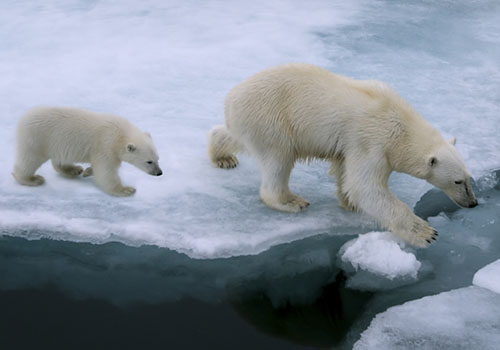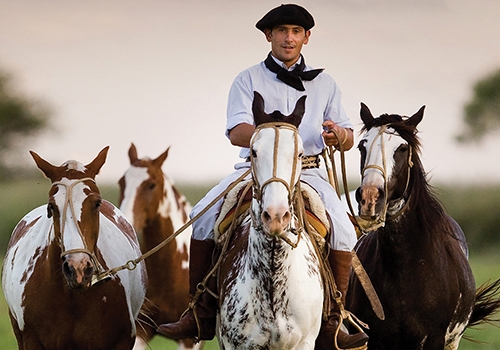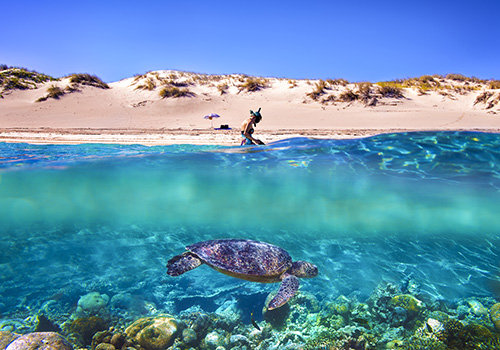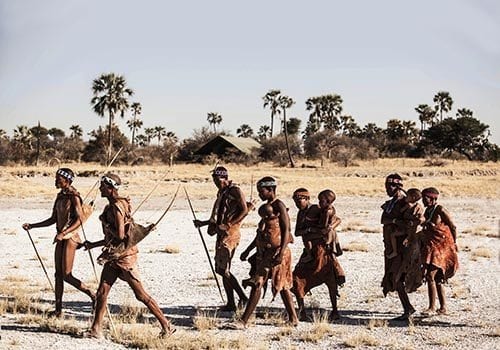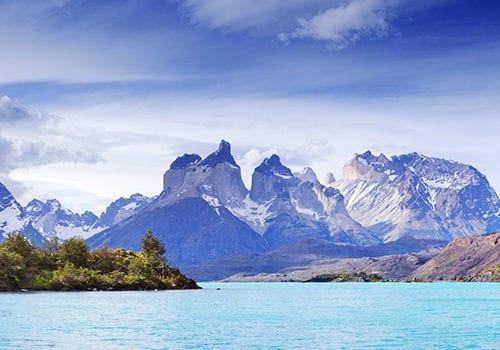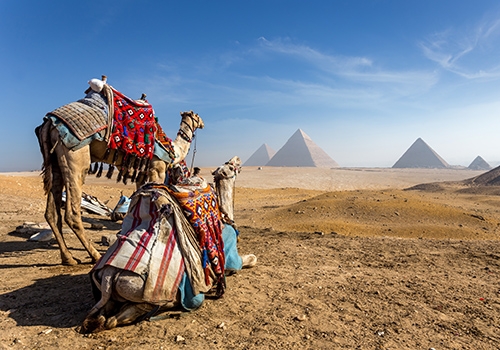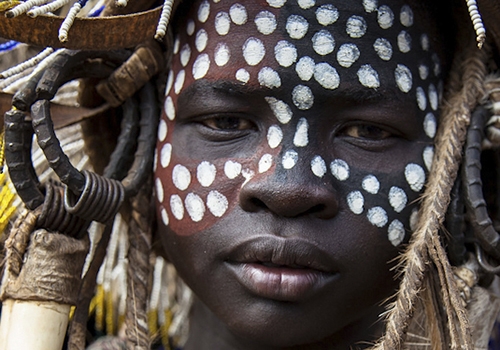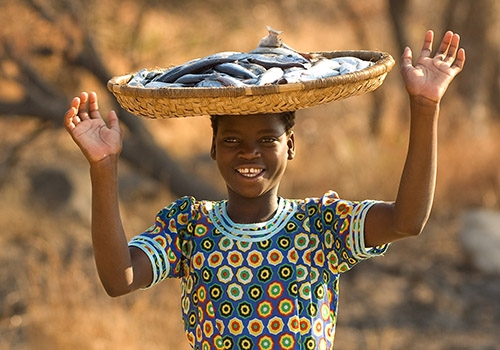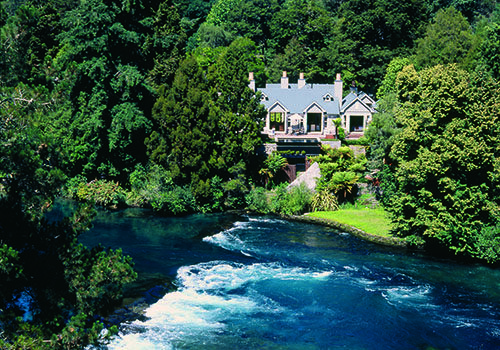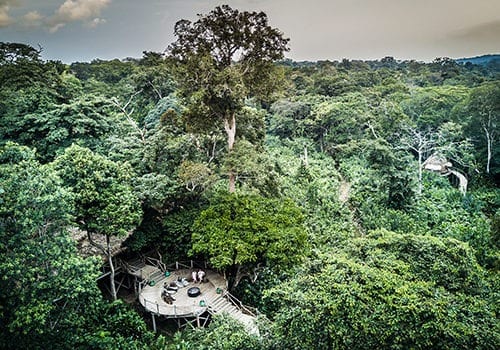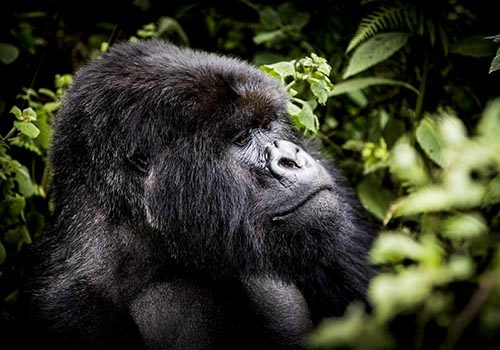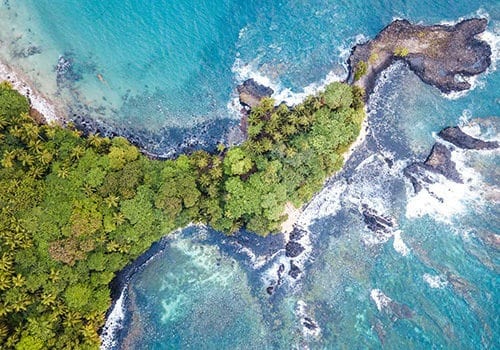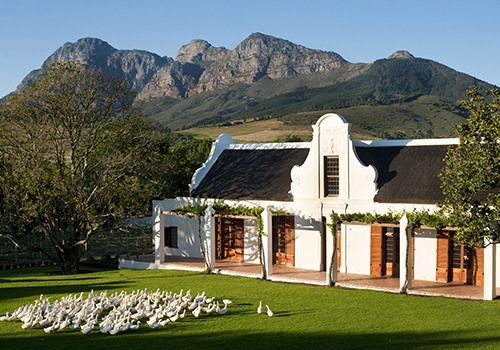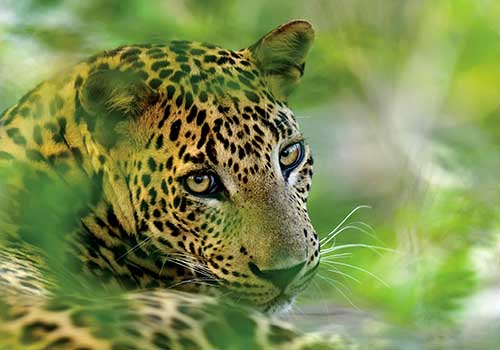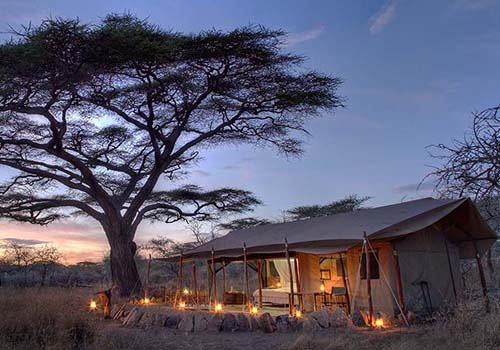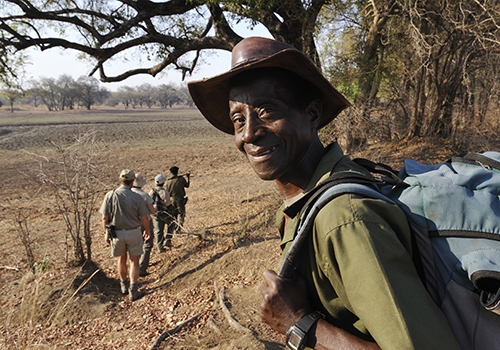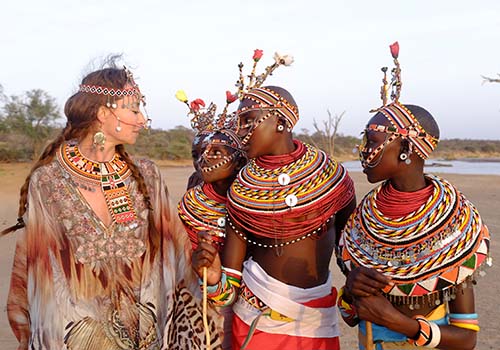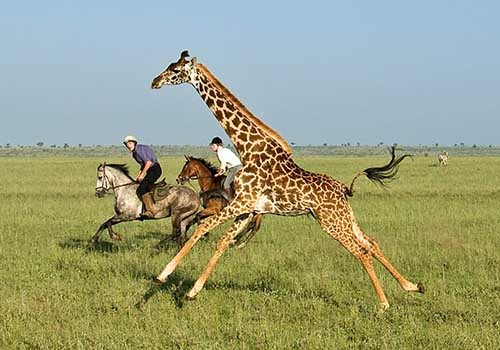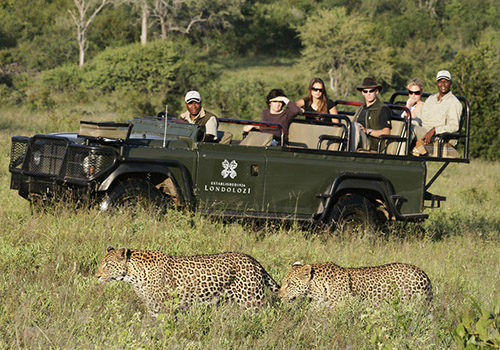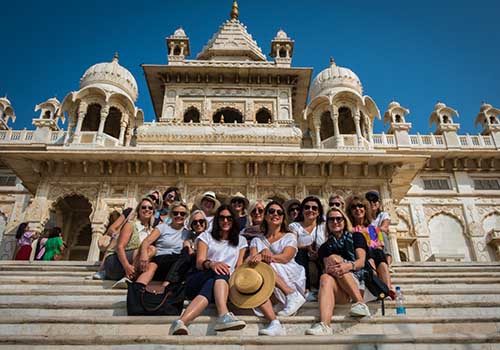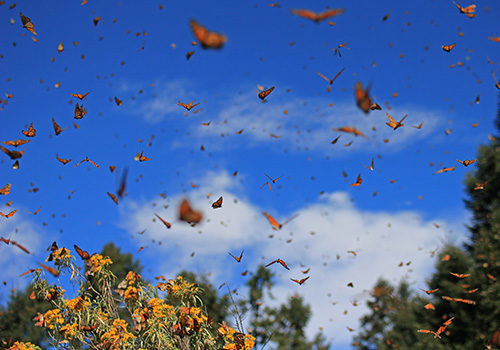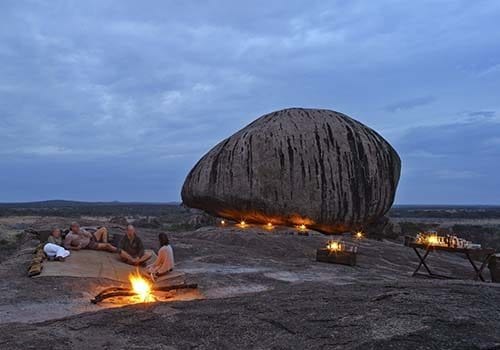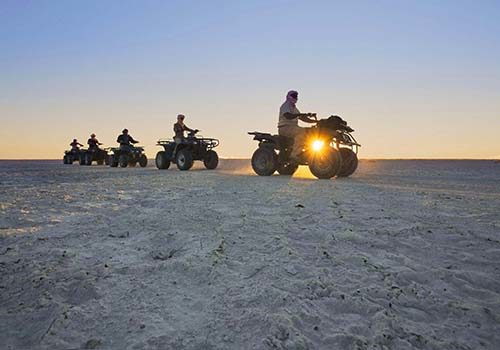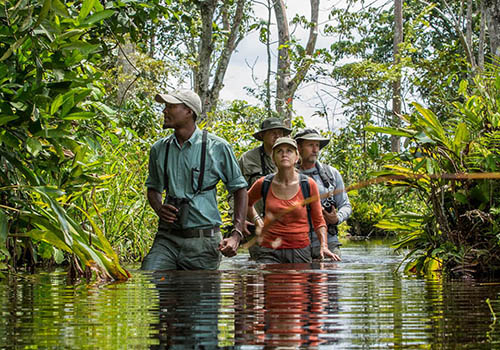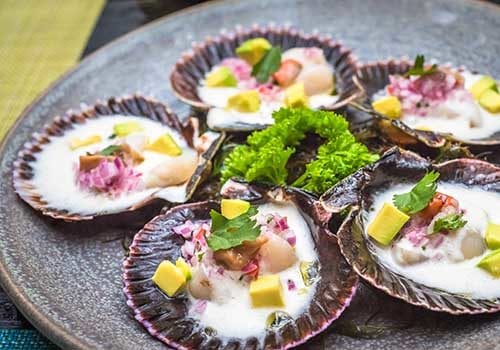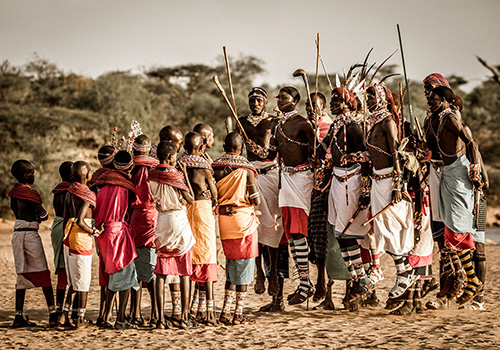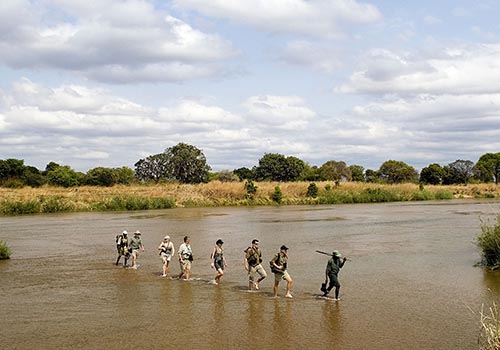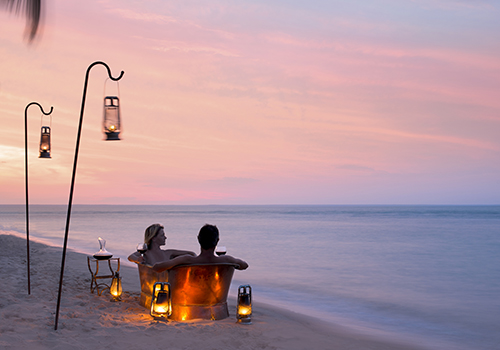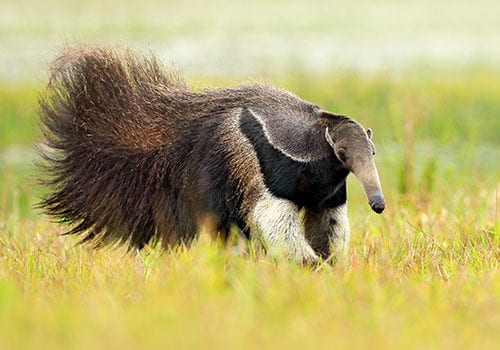
KEY INFORMATION TO PREPARE FOR YOUR JOURNEY
Ecuador straddles the Equator with Colombia to the northeast and Peru to the south. It is geographically divided into three regions: the coast, the highlands and the rainforest. But the main destination is Galapagos, famed for their vast number of endemic species. It is also home to one of the world’s highest active volcanoes, the exotic Amazon Jungle, and many UNESCO World Heritage Sites.
This little country has a privileged climate and splendid landscapes, and with everything from tropical forest to warm coastlines and cool mountains, it provides travellers with a range of experiences with typical South American appeal.
PLEASE NOTE: All pre-departure information was correct at the time of writing, but should be used as a guide only since requirements can change at short notice and without warning. Consult Smart Traveller or contact the Ecuador High Commission or the appropriate authority prior to departure to confirm all details.
AT A GLANCE
ECUADOR KEY FACTS
Time: Quito: GMT – 5 hours | AEST -15 hours; Galapagos Islands: GMT – 6 hours | AEST -16 hours
Capital: Quito
International Airport(s): Mariscal Sucre Quito International Airport
Official languages: Ecuador’s official language is Spanish, but Quichua is spoken by many indigenous people.
Religion: The predominant religion in Ecuador is Christianity, specifically Roman Catholic
Electrical Current: 110 volts | Adaptor type B with 2 flat and 1 round pin
Currency: US Dollar | USD
Honorary Australian Consulate: Pinturas Unidas S.A., Km 16.5, Via Daule. Guayaquil, Ecuador | T: (+593) 9 5981 1614 | E: ausconsulate@unidas.com.ec. Full consular assistance provided by the Australian Embassy in Chile.
Visa: No – Australian nationals do not require a visa for stays of up to 90 days.
Additional entry requirements for the Galapagos Islands: All passengers arriving into the archipelago are required to make a sworn declaration of the foodstuffs and goods you are entering with, as well as if you have been in contact with animals recently, and if you are carrying camping equipment – refer to ‘Galapagos Islands additional entry requirements‘ for further details.
USEFUL WEBSITES
Smart Traveller – https://www.smartraveller.gov.au/destinations/americas/ecuador
Travel Doctor-TMVC – https://www.traveldoctor.com.au/destinations/ecuador
Ecuador High Commission – https://protocol.dfat.gov.au/Public/Missions/60http://www.ecuador.org/
PUBLIC HOLIDAYS
January 1: New Year’s Day
February/March: Carnival (proceeding Lent). Dates change annually.
Friday before Easter: Good Friday
Monday after Easter: Easter Monday
May 1 – approx (floating): Labour Day
May 24 – approx (floating): The Battle of Pichincha
August 10 – approx (floating): Declaration of Independence of Quito
October 9 – approx (floating): Independence of Guayaquil
November 2 – approx (floating): All Souls’ Day
November 3 – approx (floating): Independence of Cuenca
December 25: Christmas Day
Although not officially a public holiday, the anniversary of the annexation of the Galapagos Islands and Charles Darwin’s birthday are also celebrated on February 12th as Galapagos Day. This is sometimes described on the mainland as Amazon and Galapagos Day or Orient Day (dia del Oriente), as the discovery of the headwaters of the Amazon River by Francisco de Orellana in 1542 is also recorded occurring on the same day.

PASSPORT & VISA REQUIREMENTS
PASSPORTS
Your passport must be valid for at least six months after your return to Australia and have at least two blank pages for every entry and country you intend to visit on your journey. If your passport does not meet these requirements you must obtain a new one. The Australian Passport Office website is www.passports.gov.au.
It is a wise precaution to carry a photocopy of your passport separately and leave a copy at home. This will aid authorities in processing a new passport should yours get stolen or lost.
If you have dual citizenship and more than one passport, we strongly recommend that you use only one of these during your travels, as in some countries it is considered illegal to have two or more passports. Be sure to use the same passport on entry and exit from a country, and never surrender your passport.
If your passport name is different to your commonly used name, advise us of this and ensure your airline reservations match those of your passport name.
VISAS
Australians can stay in Ecuador for up to 90 days without a visa. If you want to stay longer, you can pay to request an extension for up to 90 extra days (you can only do this once).
Visa and other entry and exit conditions can change at short notice. This includes currency, customs and quarantine rules. Contact an embassy or consulate of Ecuador and visit the Ecuadorean Migration for details.
TRAVEL TO THE GALAPAGOS ISLANDS
Travellers visiting Galapagos must pay the National Park tax of USD100 and USD 10 for the Ingala Transit Control Card. Depending on arrangements these can be paid in advance.
Additionally, the Governing Council of the Special Regime of Galapagos requires foreign tourists to meet particular criteria, including filling out the Galapagos Transit Control Card at least 24 hours before entering, having an outbound flight, and travel insurance. You may be requested to show your hotel booking.
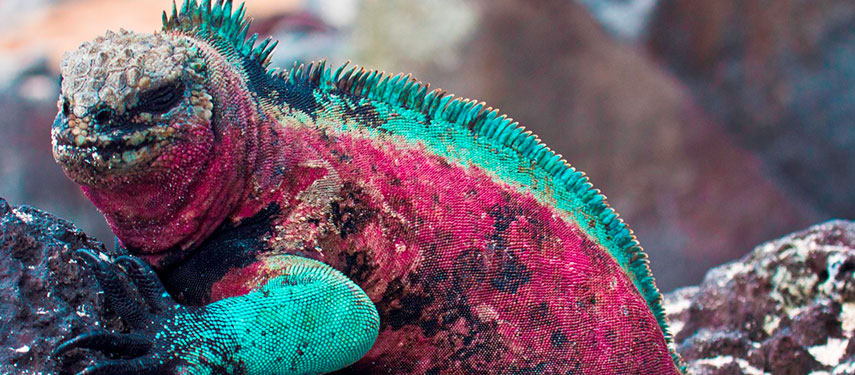
DOCUMENTATION
A Tourist Information Card may need to be filled in upon arrival and handed to immigration. Please keep the copy they give you since it can be requested when leaving the country.
TRAVELLING WITH CHILDREN
Children younger than 18 who travel alone or with 1 parent may need to present:
- a letter of consent from non-travelling parents
- a copy of their birth certificate
Both documents must be:
- translated into Spanish
- notarised by the Embassy of Ecuador in Australia

GALAPAGOS ISLANDS ADDITIONAL ENTRY REQUIREMENTS
NEW SWORN DECLARATION PROCEDURE FOR ENTERING THE GALAPAGOS ISLANDS
As part of the Galapagos Biosecurity Agency’s mission to conserve the unique species and ecosystems of the Galapagos Islands, all passengers arriving in the archipelago are required to make a sworn declaration of the foodstuffs and goods you are entering with, as well as if you have been in contact with animals recently, and if you are carrying camping equipment.
This declaration is now available online and we recommend you complete it not more than 48 hours before entering the Galapagos Islands.
The steps are:
- Go to https://declaracion.abgalapagos.gob.ec/declaracion
- Fill in passenger details, airline, flight number, and check the boxes.
- Review the confirmation email sent by the Agency.
- Show this email to the biosecurity agents on arrival at Baltra airport.
The Galapagos Biosecurity Agency’s role is essential in preventing invasive species entering the archipelago, and they thank you for your time and your commitment to preserving the islands for future generations.
CLIMATE, WEATHER & SEASONS
CLIMATE
The country has two primary seasons that are differentiated by the distribution of rainfall. Summer extends from June to September and is the dry season; Winter falls from October to May and usually brings with it warmer temperatures, rain showers, and higher humidity.
Beyond that, the varied geography of Ecuador means the country is divided into several micro-climatic zones:
ON THE COAST: The weather on the coast of Ecuador is constantly warm and there is classically only 2°C to 3°C variation between the hottest and coldest months. The rainy season, accompanied by high humidity is from December to May.
AT ALTITUDE: The mountainous area is generally cooler but climate is largely dictated by altitude. Average monthly temperatures are about 14.5° C in the rainy season and 15° C in the dry season so there is very little temperature fluctuation.
IN THE AMAZON: The Amazon Region in the eastern part of the country is tropically hot and humid all year round and experiences rainfall almost daily. The average temperature is around 21° C during most months of the year.
KEY SEASONS IN THE GALAPAGOS
- June to November: Cool & dry. August & September see the coolest temperatures and roughest waters.
- December to May: Warmer & wetter but with calmer waters and good visibility for diving & plenty of sea turtles present
- April to November: the Waved Albatross is in town
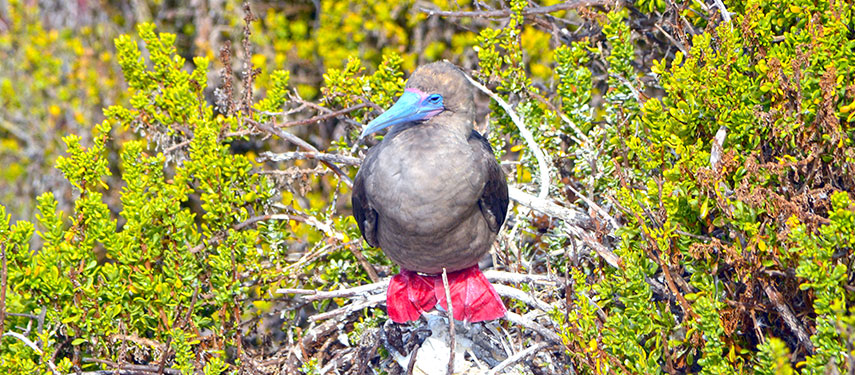
| QUITO | JAN | FEB | MAR | APR | MAY | JUN | JUL | AUG | SEP | OCT | NOV | DEC |
|---|---|---|---|---|---|---|---|---|---|---|---|---|
| Temperature (°C) | 10-19 | 10-19 | 10-19 | 11-19 | 11-19 | 9-19 | 9-19 | 9-19 | 9-20 | 9-19 | 9-19 | 10-19 |
| Rainfall (mm) | 115 | 130 | 155 | 175 | 125 | 50 | 20 | 25 | 80 | 130 | 110 | 105 |
| GUAYAQUIL | JAN | FEB | MAR | APR | MAY | JUN | JUL | AUG | SEP | OCT | NOV | DEC |
|---|---|---|---|---|---|---|---|---|---|---|---|---|
| Temperature (°C) | 21-31 | 22-31 | 22-31 | 22-32 | 20-31 | 20-31 | 19-29 | 18-30 | 19-31 | 20-30 | 20-31 | 21-31 |
| Rainfall (mm) | 230 | 240 | 250 | 155 | 60 | 35 | 10 | 0 | 5 | 5 | 5 | 35 |
| GALAPAGOS | JAN | FEB | MAR | APR | MAY | JUN | JUL | AUG | SEP | OCT | NOV | DEC |
|---|---|---|---|---|---|---|---|---|---|---|---|---|
| Temperature (°C) | 23-29 | 23-30 | 23-30 | 23-30 | 22-29 | 21-27 | 19-25 | 19-24 | 18-24 | 19-25 | 20-36 | 21-27 |
| Rainfall (mm) | 70 | 90 | 95 | 70 | 35 | 25 | 15 | 5 | 5 | 5 | 10 | 30 |
LUGGAGE & PACKING
WHAT TO PACK
What you pack for journey to Ecuador will depend entirely on which destinations your itinerary includes. As a general rule of thumb, variety and flexibility is key. Lightweight clothing is advisable, although warmer clothing may be necessary for the evenings in Quito, and you will probably want to bring both a waterproof jacket and a wwimming costume.
Layers will serve you well if you plan to travel from the Andes to the Amazon!
PACKING FOR A GALAPAGOS CRUISE
Each cruise operator publishes their own recommendations and kit lists. Please contact us if you have not yet received this.
The following is general advice:
CLOTHING: Generally the dress code is comfortable and casual, and there is no need to dress for dinner on most boats. Pack for exploring and remember to bring your swimwear.
FOOTWEAR: Sturdy hiking or walking shoes that are comfortable over rough are uneven terrain are required and sandals or water shoes are needed for wet Zodiac landings ( e.g. Keen or Teva sandals)
TOILETRIES: Many operators provide biodegradable body wash, shampoo and lotion to protect the delicate Galapagos ecosystems.
Please note that single use plastics are restricted in the Galapagos.

HEALTH & VACCINATIONS
HEALTH & VACCINATIONS
It may be necessary to take medical precaution prior to, and whilst travelling. As we are not qualified to offer advice, we recommend you contact your GP or the Travel Doctor-TMVC who have the most up‐to-date information available and can tailor their advice to your specific needs. Requirements are highly personal depending on your health profile and the activities in your itinerary.
Some vaccinations must be given well in advance of travel, so we suggest seeking medical advice as soon as you start to plan your trip. Be sure to ask what vaccinations or medications may be required to enter Ecuador and to re-enter Australia.
You can also refer to SmartTraveller for a guide as to what may be required, however you should always seek professional medical advice before travelling.
FOOD & DRINK
- Drink boiled water or bottled water with sealed lids and avoid ice cubes, except in lodges and hotels where water quality is tested and assured.
- If in doubt, avoid raw and undercooked food, such as salads, as well as dairy products which are often unpasteurized. Gastrointestinal diseases are more common during the rainy season.

GENERAL RECOMMENDATIONS
For all insect-borne diseases the best advice is to cover up – use insect repellent, mosquito nets and wear long, loose, light-coloured clothing
YELLOW FEVER: Yellow fever is common so a vaccination is recommended for everyone entering Ecuador, particularly for those travelling to the regions of the Amazon basin.
ZIKA VIRUS: Zika virus is widespread. The Australian Department of Health advises pregnant women to discuss travel plans with a doctor and consider deferring non-essential travel to affected areas.
MALARIA & DENGUE FEVER: There is high risk of malaria and dengue fever in areas below 5,000ft (1,500m). There has been a dramatic increase in the number of reported cases of dengue fever primarily in coastal and Amazon regions. The best prevention is to cover up and use mosquito repellent liberally throughout the day.
ALTITUDE: High altitude can affect some people’s health so visitors to Quito (6,500ft/2,800m), for example, are advised to take it easy for the first few days. When at altitude, be aware of the symptoms and ensure your travel insurance covers costs relating to evacuation from high-altitude areas.
SEASICKNESS: It is advisable to take seasickness tablets on a Galapagos boat cruise, even if you don’t end up needing them. Many boats are fitted with stabilizers which smooths out most of the swell and help enormously.
MONEY MATTERS
CURRENCY AND EXCHANGE
The US Dollar (USD) is the official currency in Ecuador. In 2000 the Sucre was replaced by the dollar as the legal currency, but despite dollarization, the Sucre will likely persist in rural areas for a while longer.
It is recommended that travellers bring both US dollar notes and Travellers Cheques as other foreign currencies are difficult to exchange outside of Quito, Guayaquil and Cuenca. Small denominations in good condition are the easiest to exchange outside of the main cities. In the main centres most currencies can be exchanged at banks and exchange houses (casas de cambio) at variable commission rates. It is recommended that you DO NOT change money on the black market as you are more likely to receive a lower rate of exchange or fake notes.
ATMs are available in the cities, and major credit cards are accepted in tourist areas and large hotels although a commission of 6-8% is often charged.
TELL YOUR BANK
We highly recommend you advise your bank of your destinations and travel dates. This should prevent any of your transactions being deemed as ‘out of the ordinary’ (and possibly stopped) due to their unexpected location.
TIPPING
A tip of 10% is expected in restaurants. It is not customary to tip taxi drivers but it is usual to round up the fare if they help with luggage. Guides and transfer drivers highly appreciate receiving as deserved (USD10 for guides and USD5 for drivers per day is a good gratuity).
In general tipping small amounts is customary for all services.
SHOPPING
Otavalo has the biggest outdoor market in South America, which boasts endless colourful indigenous artisan treasures surrounded by dramatic Andean peaks. It is the ideal place to buy some typical Ecuadorian art crafts. Make sure to bring small notes and be prepared to bargain, although it’s always best to err on the side of generosity – a couple of dollars here and there probably won’t ruin your holiday but you might make someone’s day!
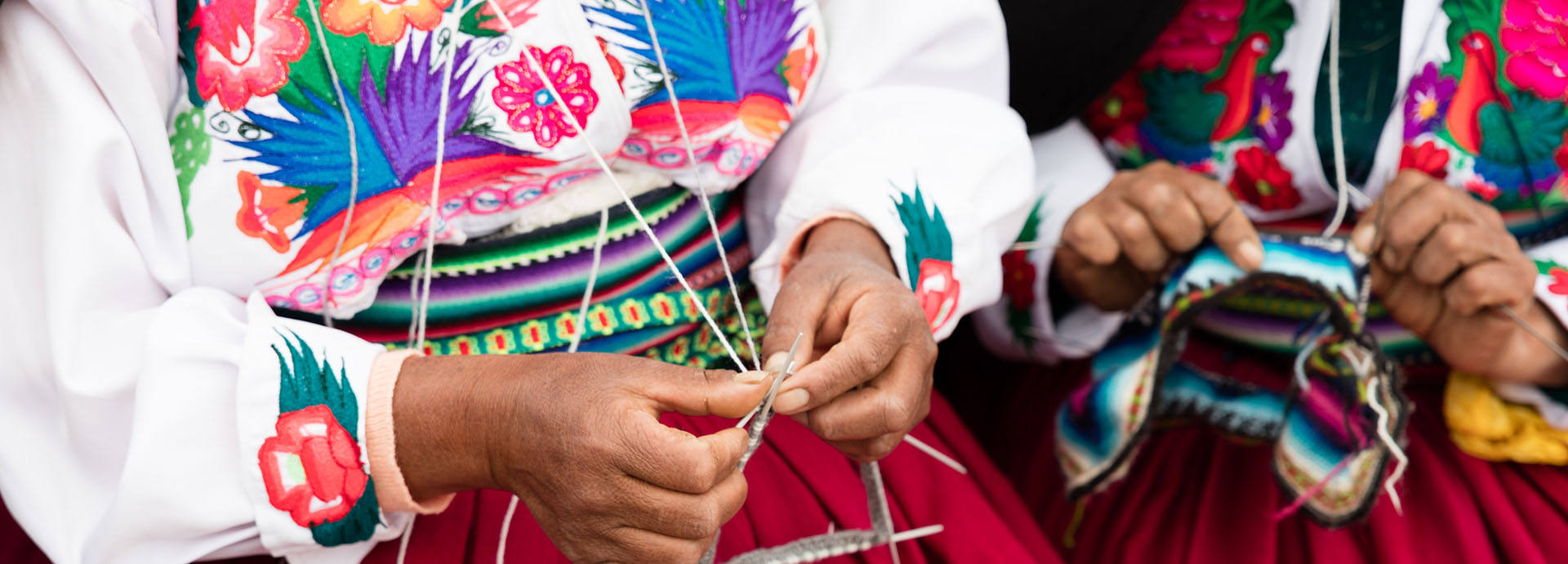
POWER & TECH
POWER
There are basically two main voltage systems used around the world: 110 Volt ‐ USA, Canada, Spain & Japan 220 Volt ‐ the rest of the world. In simple terms, the power supply available at the socket is roughly twice as powerful in 240V countries as in 110V countries.
The voltage in Ecuador is 110 Volts. Australia operates a 220V currency and therefore you’ll need a voltage converter AND a plug adapter for Australian appliances. The adaptor you will need for Ecuador is a Type B.
Alternatively you may prefer to invest in an International Travel Adaptor that provides you with more than one option. Many adaptors also have a USB port so you can plug your smart phone, or I‐product directly into the adaptor.
For the latest & most up to date information about voltage and what adaptors to travel with refer to: www.korjo.com
ADAPTORS
Ecuador uses a 110V electrical current and a type B socket.


